Apple Watch: from fashion fad to healthy success
Apple's product marketing masterclass
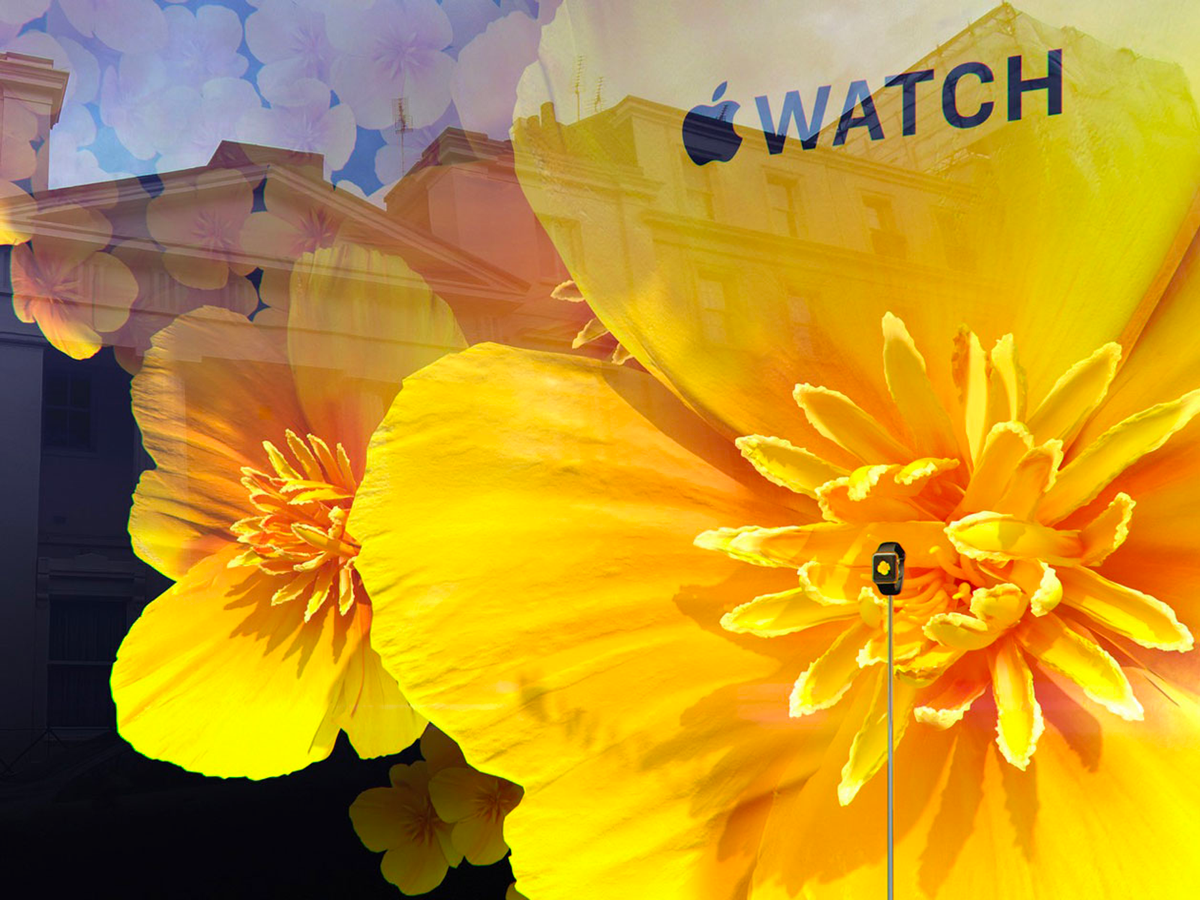
An Apple Watch window display: the Apple Watch is surrounded by big, bright yellow flowers.
On 9th September 2014 (unbelievably, approaching ten years ago), Apple unveiled a new product category – the first since founder Steve Jobs’ death three years prior:
We have one more thing. We love to make great products that really enrich people’s lives. We love to integrate hardware, software and services seamlessly. We love to make technology more personal and allow our users to do things that they could never have imagined.
We have been working incredibly hard for a long time on an entirely new product. And we believe this product will redefine what people expect from its category.
I am so excited and I am so proud to share it with you this morning – it is the next chapter in Apple’s story. And here it is.
[Super glitzy, pre-recorded video that slowly and seductively reveals the Apple Watch]
Apple Watch is the most personal device we’ve ever created. We set out to make the best watch in the world, one that is precise, it’s synchronised with the universal time standard and it’s accurate within plus or minus 50 milliseconds. It’s incredibly customisable. So you can find one that reflects your personal style and taste. Because you wear it, we invented new intimate ways to connect and communicate directly from your wrist. And it works seamlessly with iPhone and it’s also a comprehensive health and fitness device.
I vividly remember this moment, watching along live at home. I think I was probably at the peak of my Apple-fandom (those who know me well know that it hasn’t really worn off, I guess it’s probably just flatlined?). I desperately wanted this Watch from this moment, and Tim hadn’t even said anything about what it could do yet.
But that’s a story for another day. Today, let’s talk about how the Apple Watch has subtly shifted over time – and how that’s proof that Apple is a product marketing company.
The most personal device we’ve ever created
The Apple Watch landed almost ten years ago as a very different product. Our very first glimpses of the Apple Watch were all high-fashion versions – the default version was a Stainless Steel, Sapphire Crystal watch with leather or metal bands. Our second glance was of the $10,000 18-karat gold Apple Watch (later worn by Beyonce and a plethora of other stars).
Angela Ahrendts, who left her job at Burberry as CEO to join Apple’s executive team and serve as the retail head, reoriented Apple Stores from technology shops to fashion boutiques. It has been well documented the amount of training Apple Store employees went through to treat the Watch as a high-luxury piece of jewellery (and I can confirm it – I worked at an Apple Store at the time – I remember spending almost a week’s worth of shift time learning how to sell the Apple Watch). And Apple opened up Apple Watch exclusive in-store activations with high-fashion department store Selfridges in London and Galeries Lafayette in Paris.
Apple Watch was clearly a fashion play at this time – just look at this store display at Selfridges! I can’t recall a technology ever taking over Selfridge’s famous storefront – and definitely not for a product meant to be high-fashion.
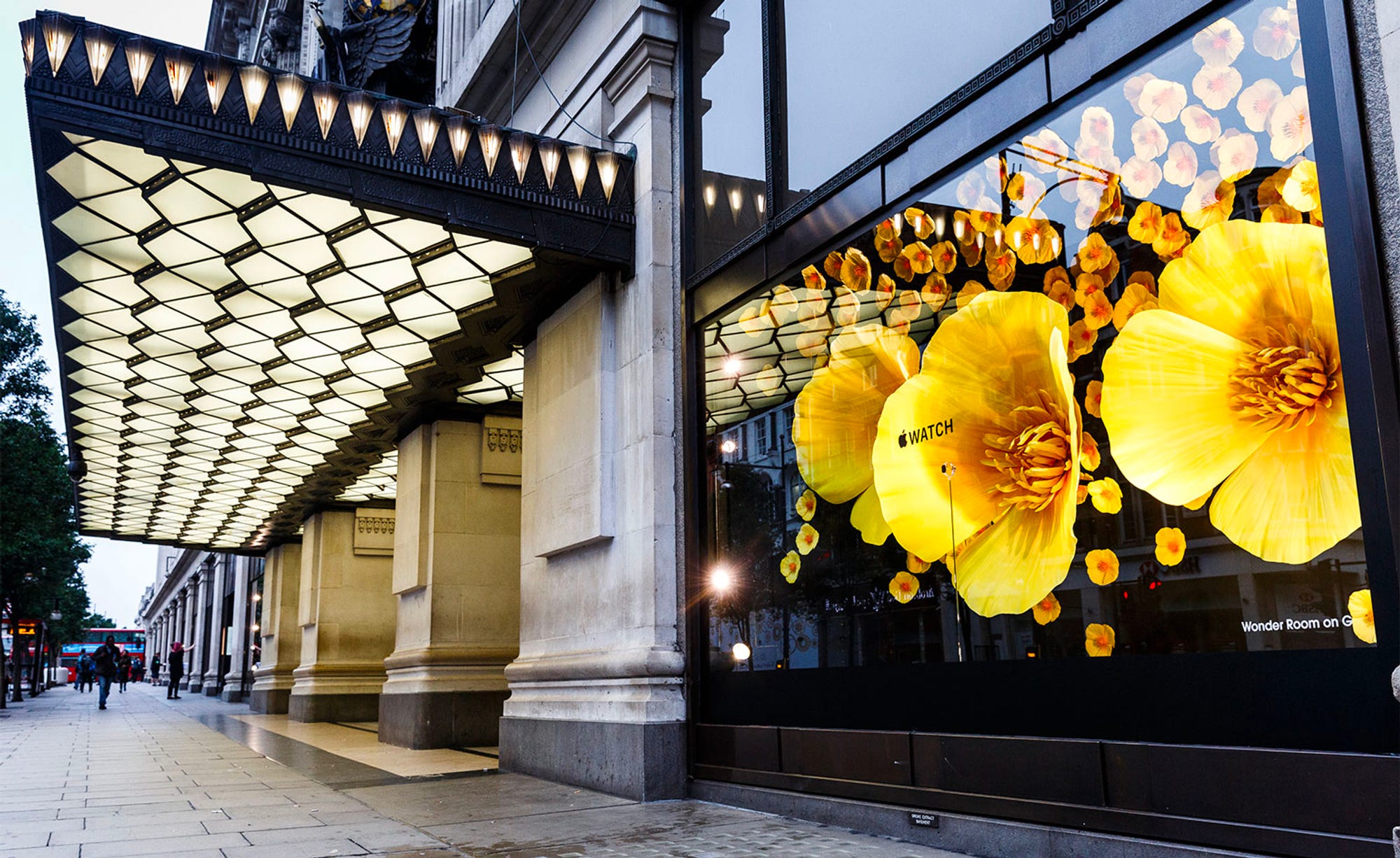
A photo of the front of Selfridges, showing an Apple Watch window display. A single Apple Watch is shown, surrounded by huge yellow flowers.
As well as a high fashion item, Apple touted that the watch was the most precise watch in the world. At the big announcement, this was the first slide Tim Cook showed after the fancy unveiling video:
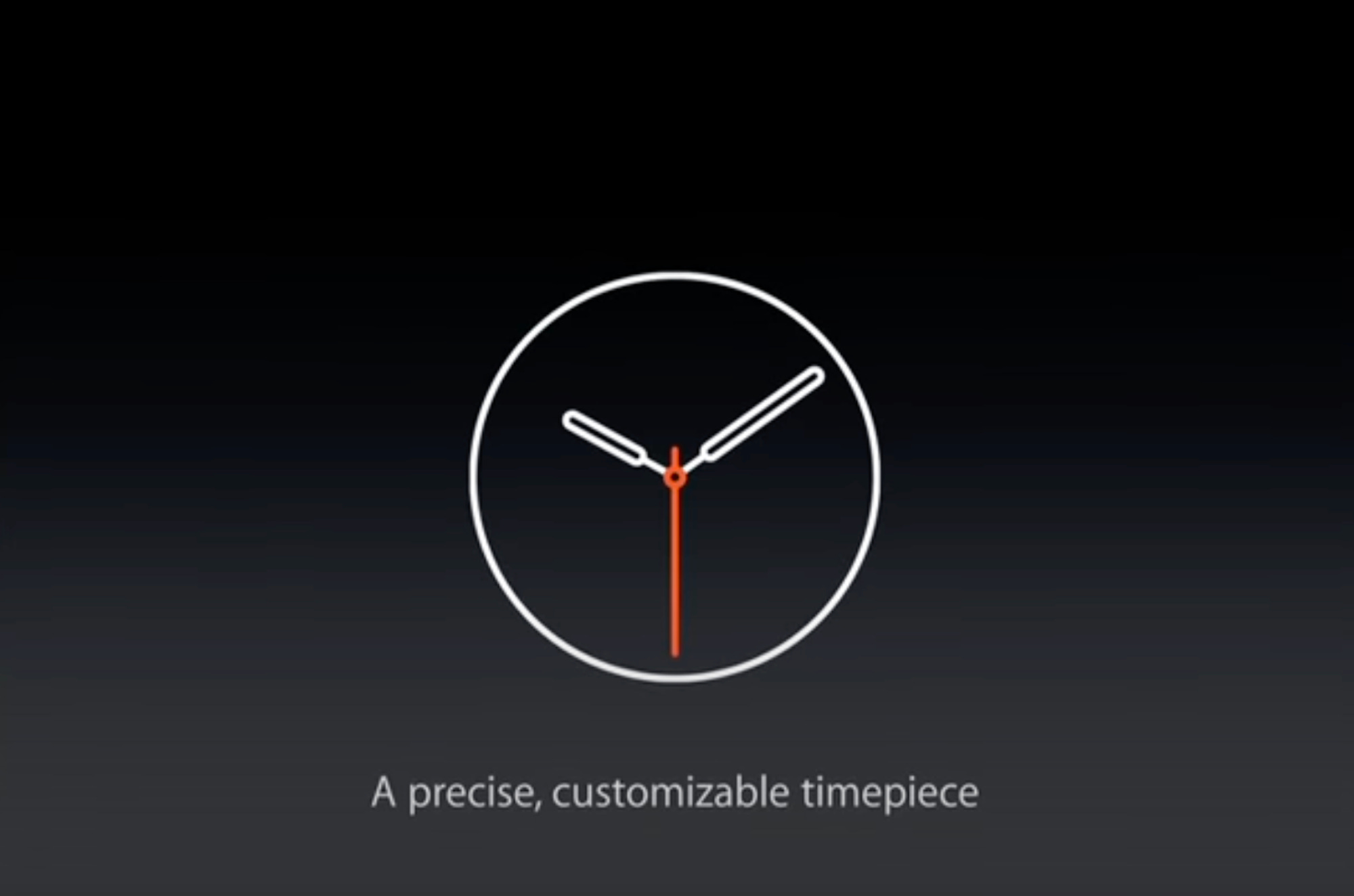
A precise, customisable timepiece
And this was the second:
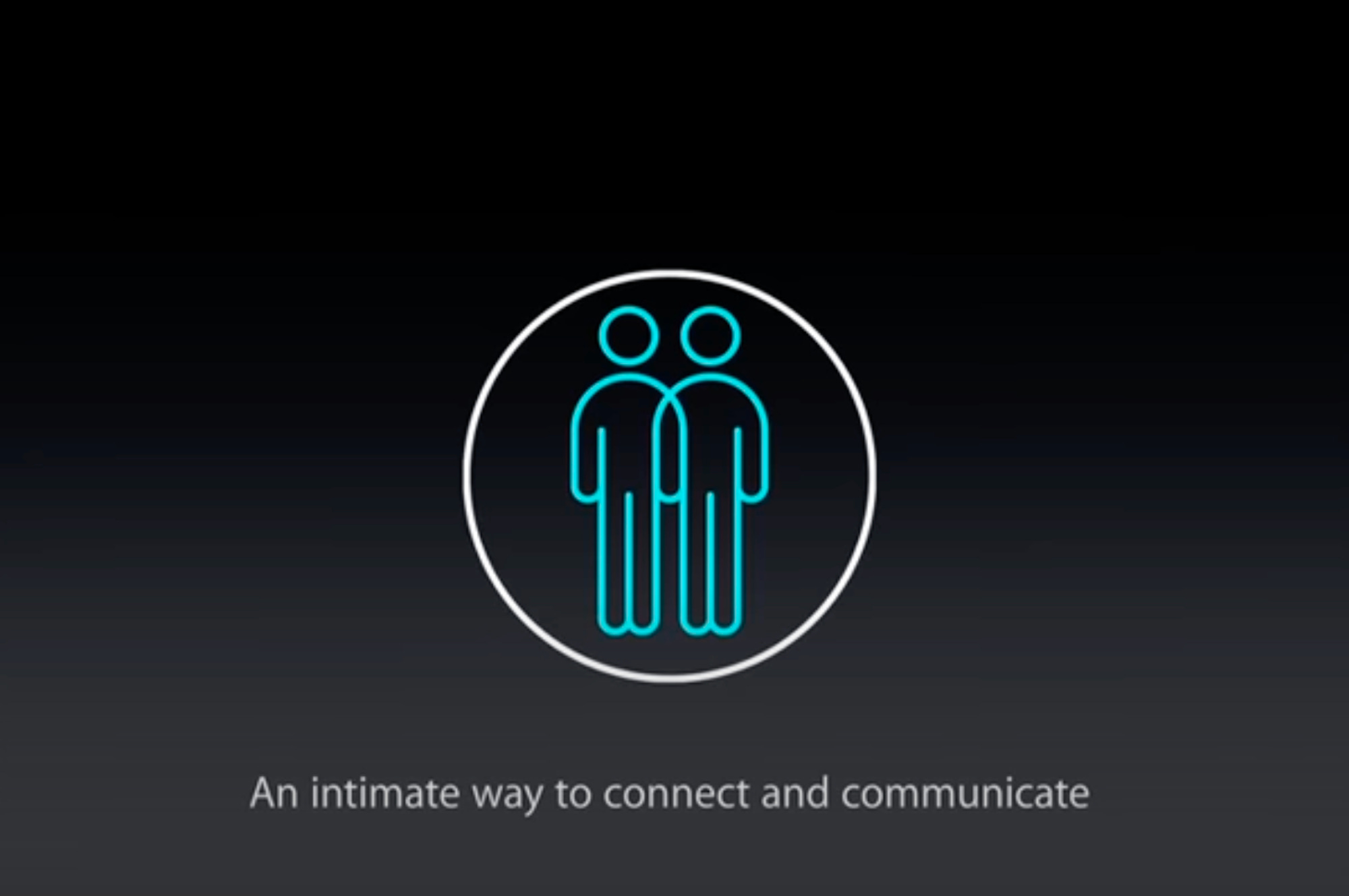
An intimate way to connect and communicate
And third and finally (in marketing videos, last definitely does mean least):
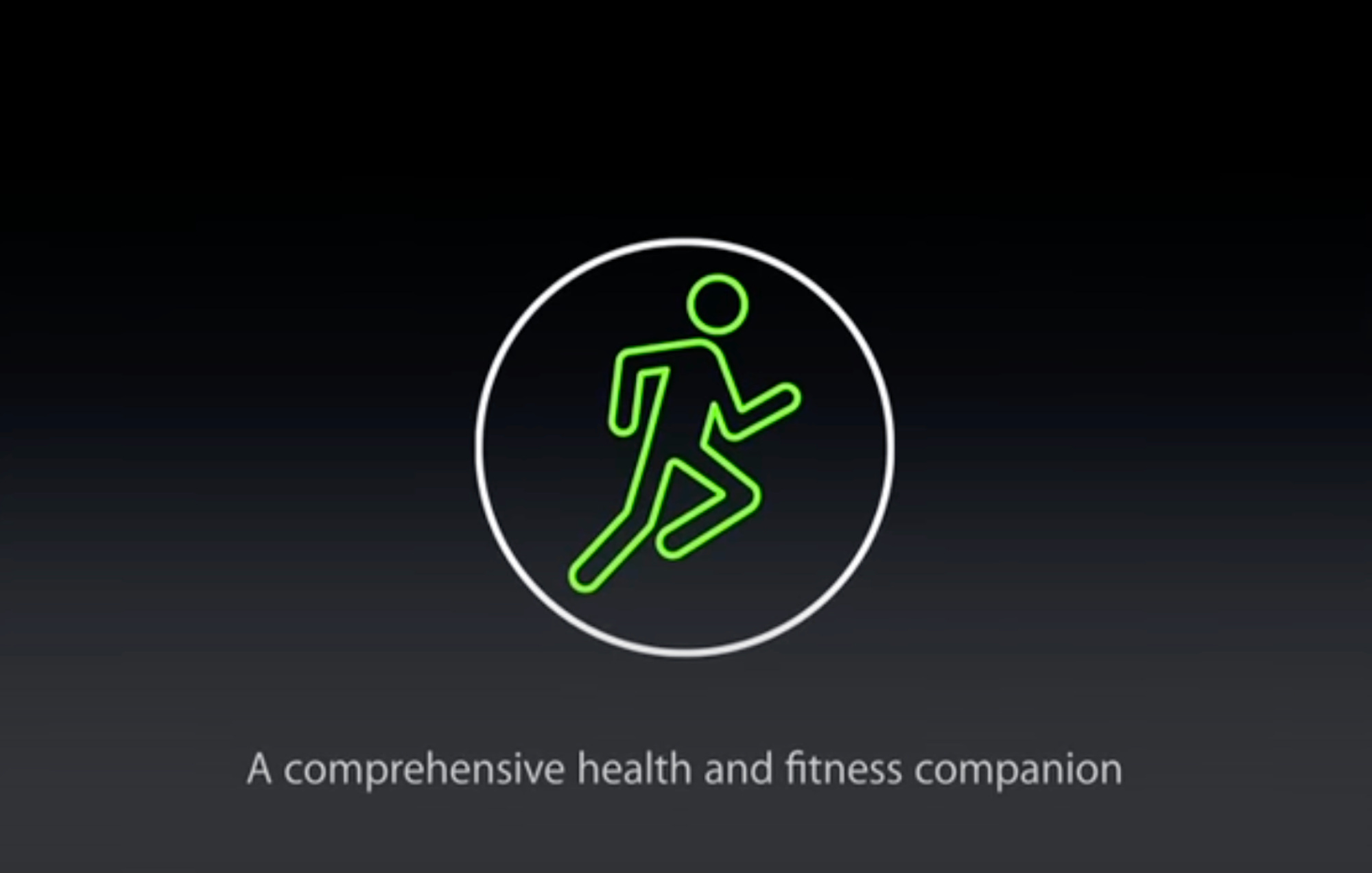
A comprehensive health and fitness companion.
So Apple Watch was first and foremost a fashion item, a precise watch that is customisable to your own style. Second, a way to intimately communicate with people you love most.
And finally, a health and fitness companion.
It’s absolutely remarkable how much of this presentation does not focus on health and fitness, knowing what we know about Apple Watch now. Let’s take a look, for comparison.
Apple Watch helps you live a better day
Head to Apple’s website, where 9 years later, the Apple Watch lineup has changed. Here’s how it looked in 2014:
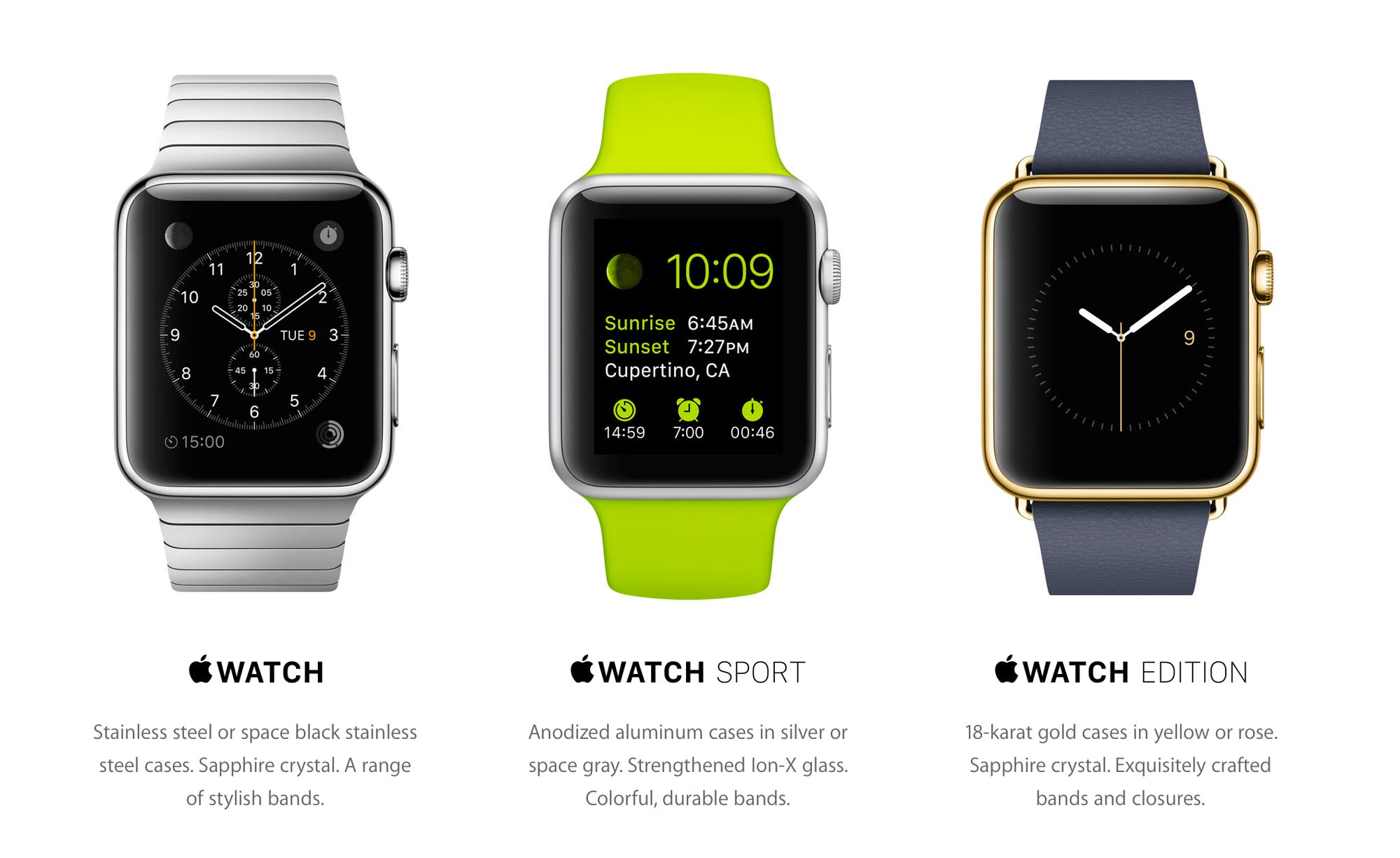
Apple Watch, Apple Watch Sport, Apple Watch Edition
Now, the line up looks rather starkly different:
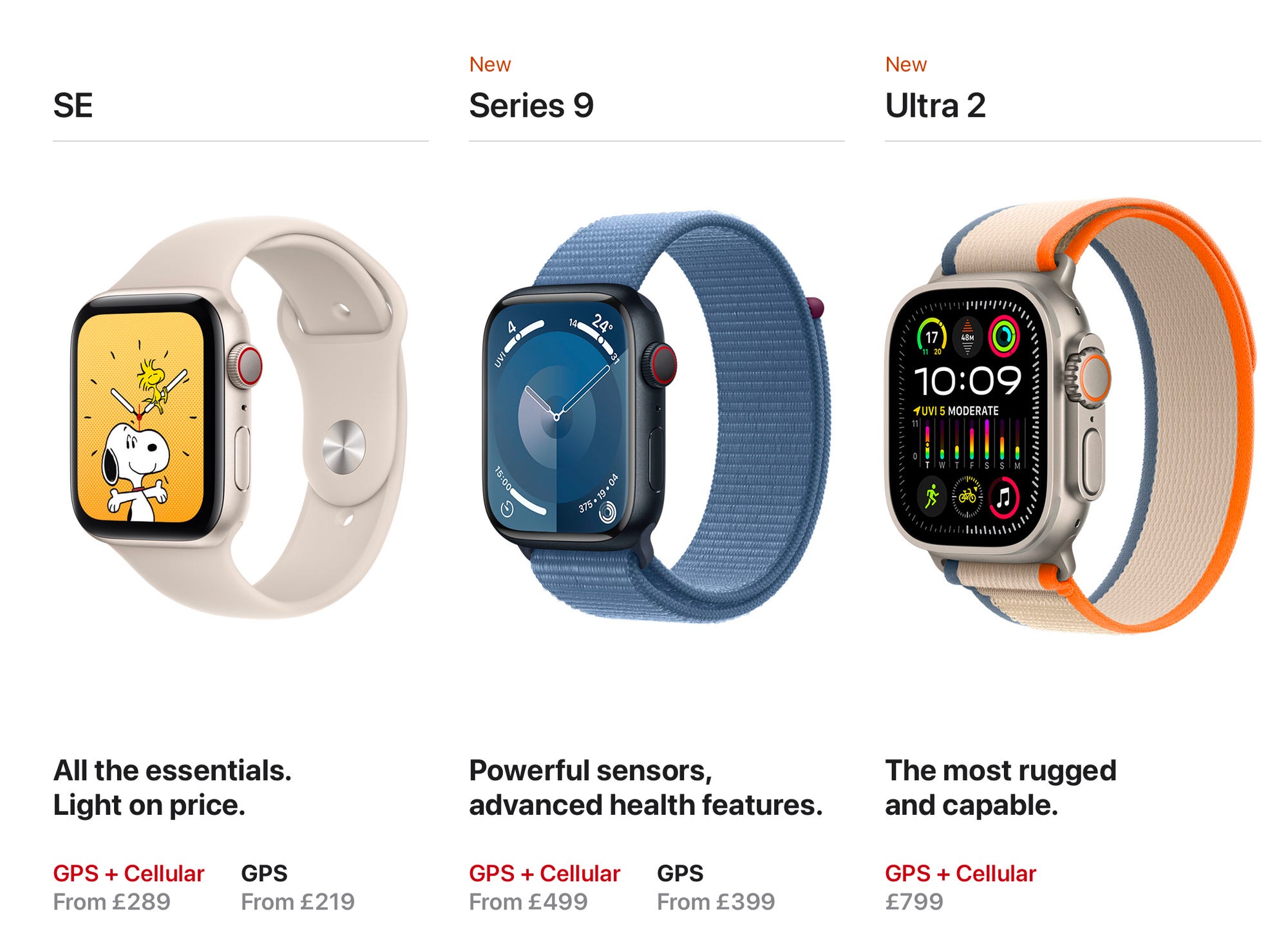
Apple Watch SE, Apple Watch Series 9, Apple Watch SE
At launch, Apple Watch models were split by material – aluminium in the Apple Watch Sport models, stainless steel for Apple Watch, and pure gold for Apple Watch Edition.
Today, they’re split by function and price point. SE – a budget, aluminium model. Series 9, the “normal” version – available in aluminium and stainless steel. And Ultra, a rugged, capable sports watch, made of titanium.
It’s not just the models, it’s the headline positioning of the entire Apple Watch line. Customisation, personalisation and communication are relegated to supporting messages. Health and fitness are promoted to headline message.
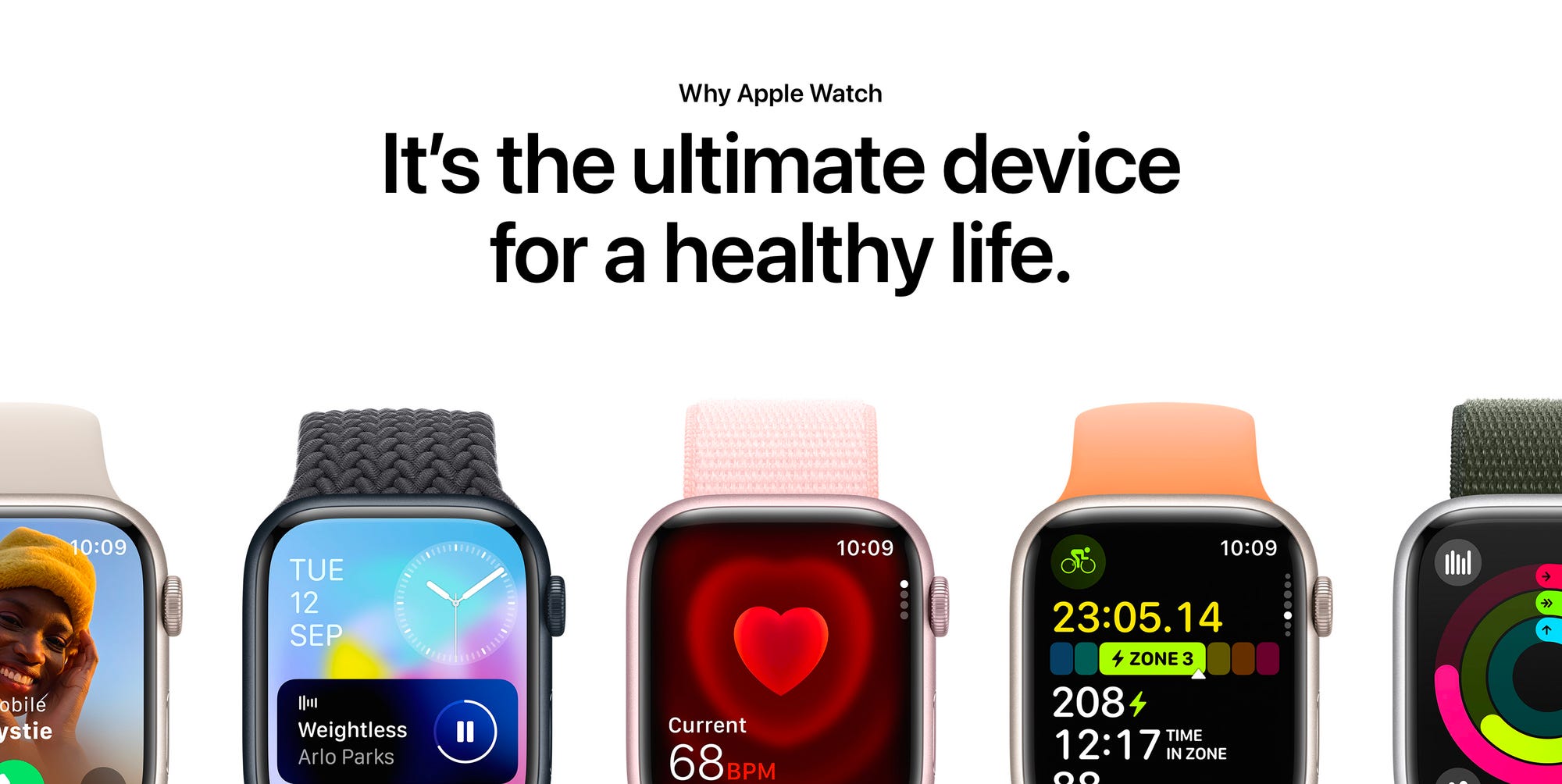
It’s the ultimate device for a heathy life.
Apple Watch started as a high-fashion item, the most personal device we’ve ever made. It’s ended up as the ultimate device for a healthy life.
This transition happened slowly, then quickly over the period of four years, from the original Apple Watch launch through to the Apple Watch Series 4.
When the transition was finally complete, Apple Watch was the best-selling watch in the world.
And it’s all because of excellent product marketing.
Knowing your customer and knowing your company
Product marketing is about making the competencies of your business and the wants and needs of your customer sing in harmony. It’s about understanding what’s happening in your customers’ worlds, understanding their priorities and, perhaps most importantly, watching how they use your product.
At the same time, it’s understanding what you’re truly good at as a company. Not only what your core, technical competencies are, but what assets you might have in the company – a sales machine, perhaps, or other products and services that could compliment yours.
Then you take the two and mush them together. Doing this successfully leads to product-market fit, and it’s great product marketing. And it’s clearly what happened here.
Anchoring in what we know in the beginning
In the lead up to 2014, Apple was clearly working on a number of different impressive technologies at once. They had a hunch that wearable tech was going to be big business. They were working on health tracking tools, like a heart rate sense and blood glucose monitoring (the latter, still, hasn’t seen the light of day). Jony Ive wanted to make something beautiful, and ultimately they needed something to prove the company could still innovate after losing Jobs.
Eventually, these various priorities and projects came together in the form of a wrist-worn wearable, and Apple positioned it firmly as a watch.
This is excellent product positioning, and you’ve probably never even thought about it. It is not a mechanical watch in any sense. It’s a computer strapped to your wrist that can track your activity, read your heart rate, monitor your blood oxygen, check for atrial fibrillation, make phone calls, stream music, give you up-to-date weather information… and tell the time.
But Apple launched the Watch knowing that humans anchor in what they know. Calling it the Apple Watch told you two things: it’s a time-telling device you wear on your wrist, and it’s from Apple (so it’ll probably work with your iPhone). Two words that convey so much more about what the thing is when paired together. Perfectly descriptive of the thing Apple wanted it to be.
Anchoring is one of the best things I’ve learned as I’ve marketed products in my career so far: often the easiest way to help people understand something is to say the thing and anchor in what people already know. Sounds super simple, but you’d be surprised at how difficult this actually is when you’re managing up and working with technical folks who built the thing.
Then, Apple listened
I’m going to paste the evolution of Apple Watch landing pages from launch to the Series 4. Please forgive me, but I think it’s important and illustrates a key point: that Apple listened, learned and tweaked its key messages and product options (more aluminium, less steel, more rubber bands, less leather) based on what customers were doing and saying:
The first Apple Watch
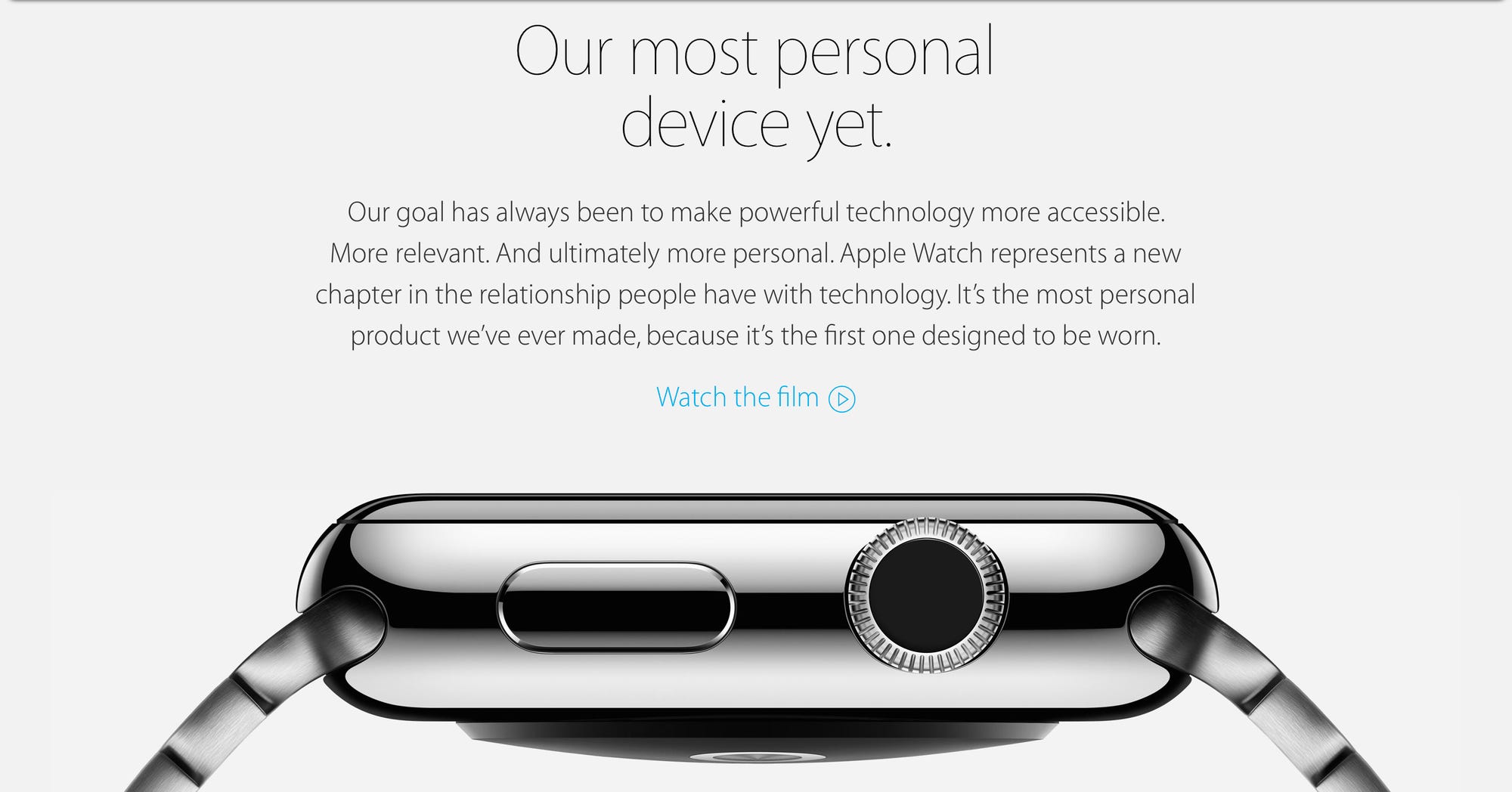
“Our most personal device yet” – it’s all about making technology look good on you. I think Apple were worried that people were never going to want to wear technology, so they went to painstaking lengths to prove it was a fashionable watch first, a computer second. Arguably, they went too far (although, we’ll never see an alternate world where it was positioned differently, and first impressions count).
Their main job to be done, of course, was to convince people they could wear computers, and through the fashion angle, you could say they achieved that.
Series 1
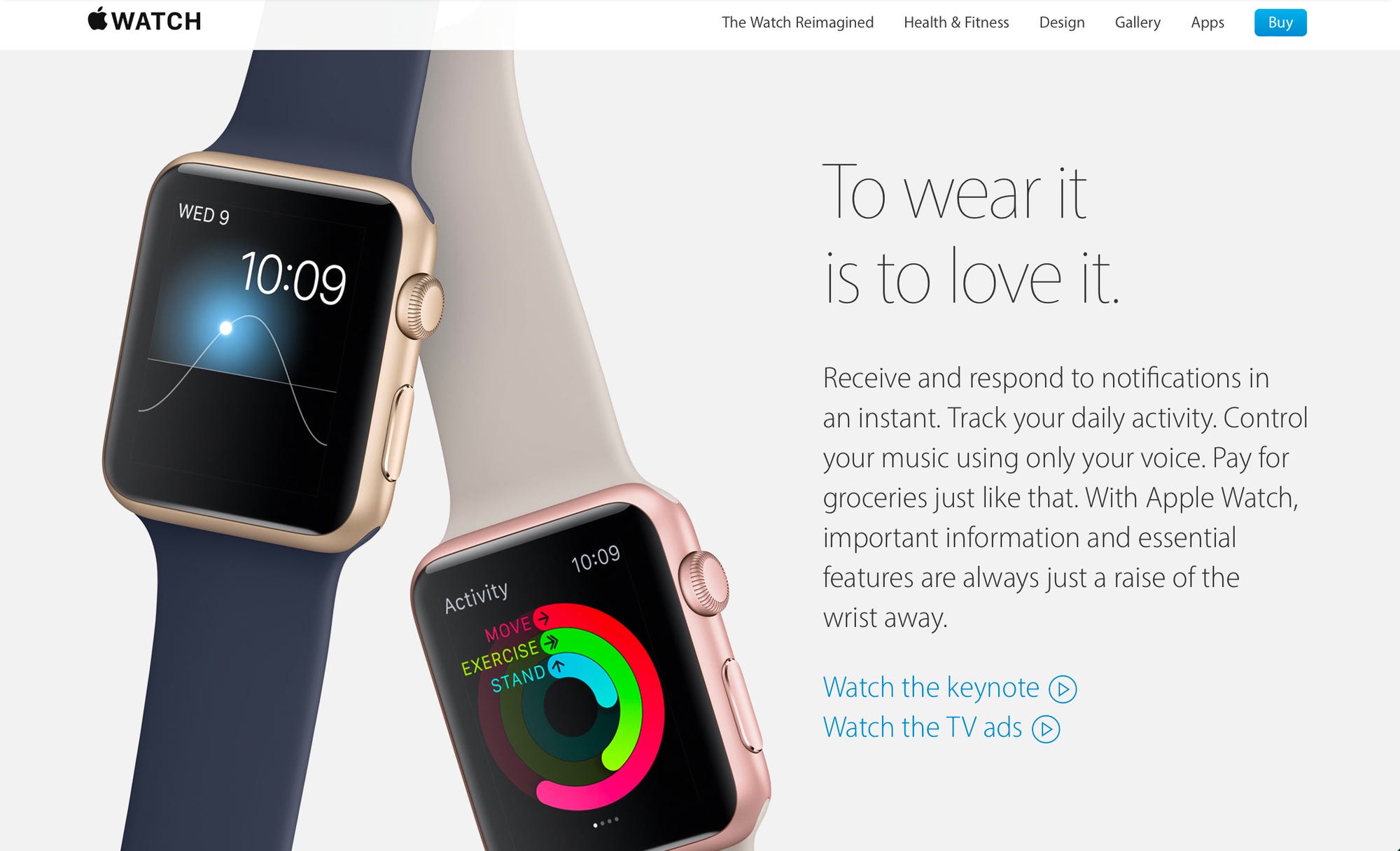
“To wear it is to love it.”
Okay, so this is a small, subtle but important shift. Personalisation and fashion is gone – at least in the copy. Stainless Steel is gone. Aluminium is in, in more colours. And – crucially – Activity tracking is one of two product shots.
“Receive and respond to notifications in an instant” is still the first proof point, but what’s second? That’s right – ”track your daily activity”.
Health and fitness begins to break through. Apple are clearly getting signs from customers this is where customers – and the market – want the Watch to go.
Series 2
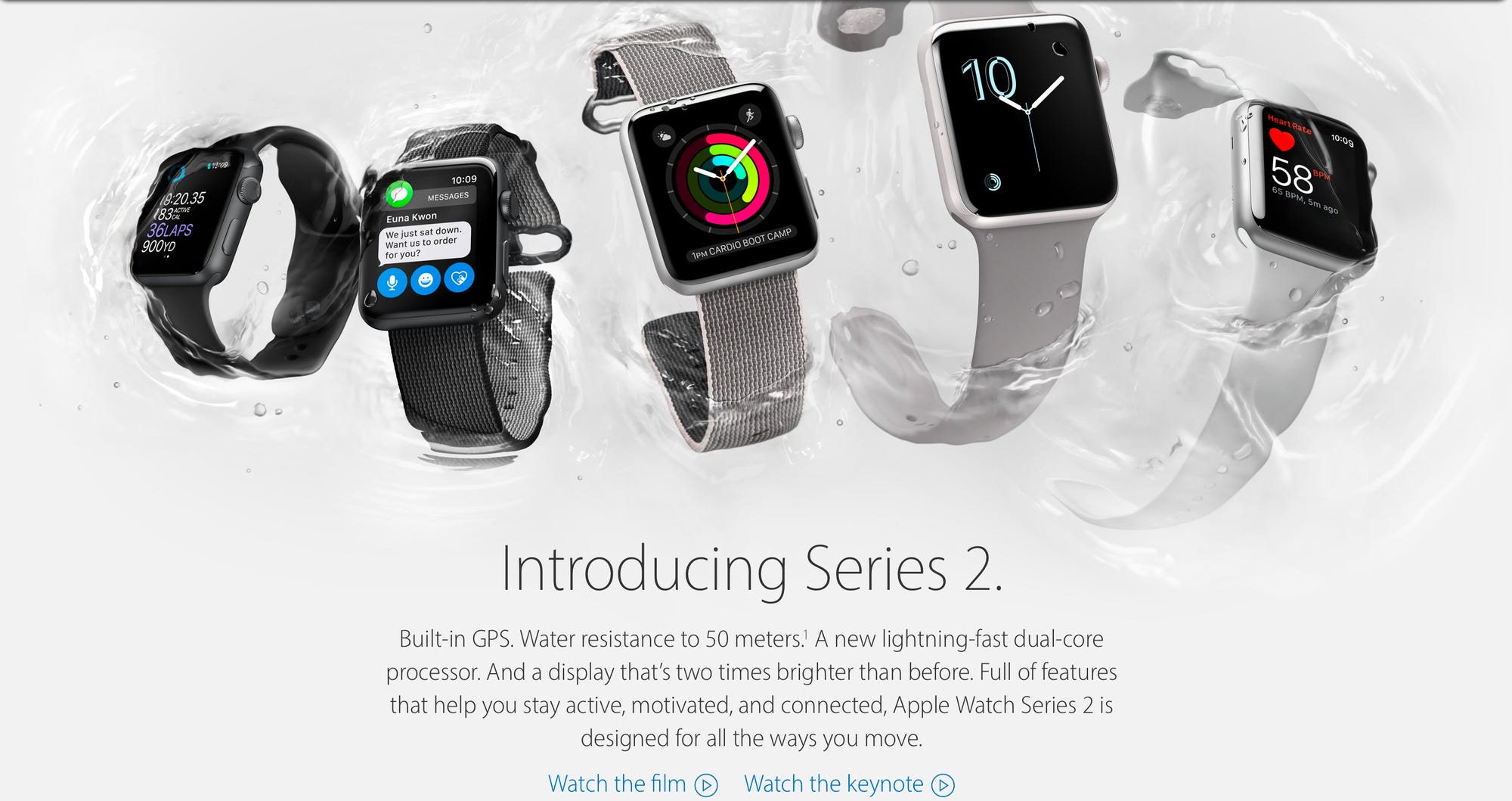
Minor update here, so I won’t dwell, but look – more aluminium, sporty looking bands. No sign of the fashion-styled shots in their launch. And three of five Watch screens are showing health or fitness things.
Series 3
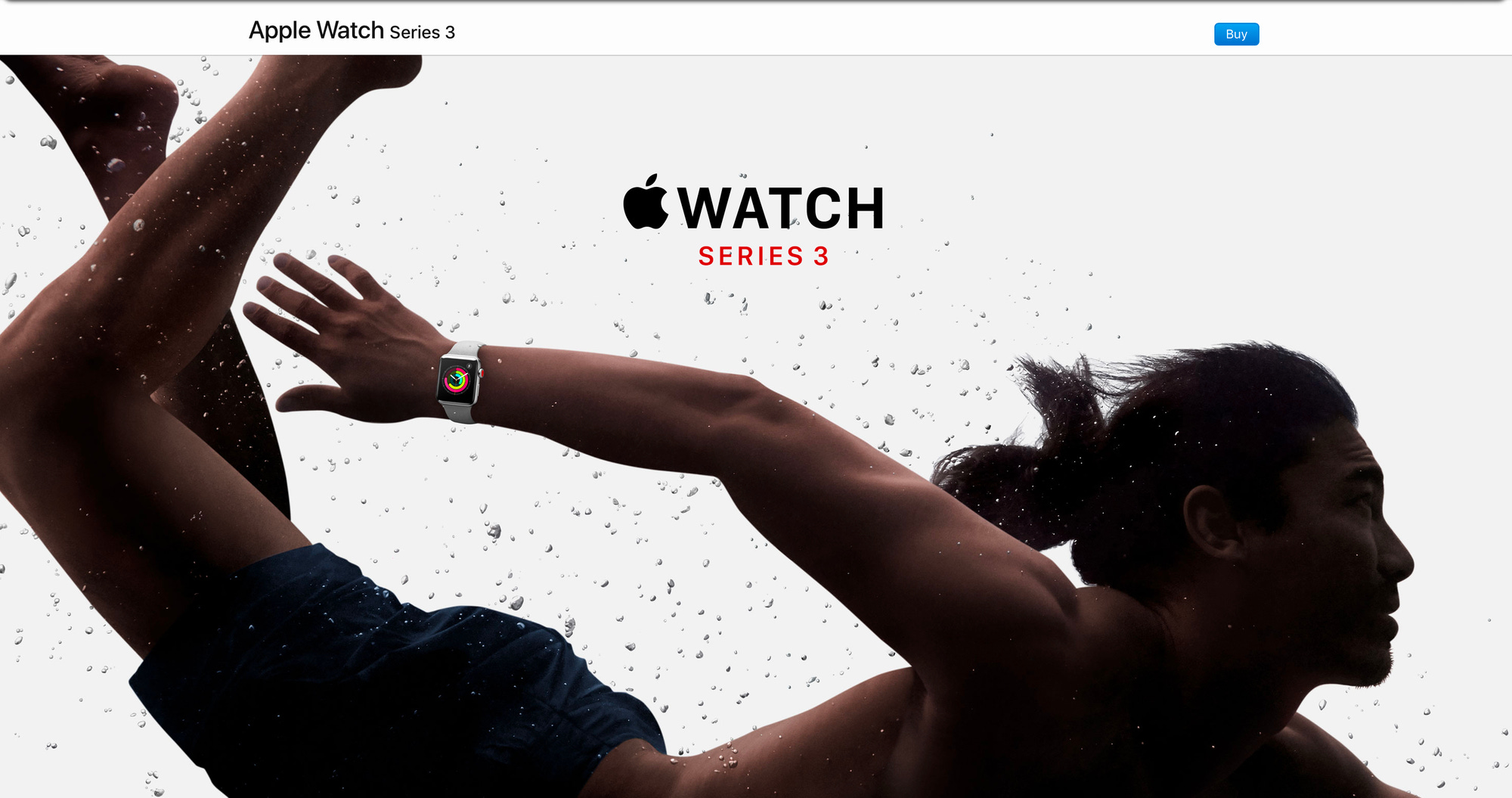
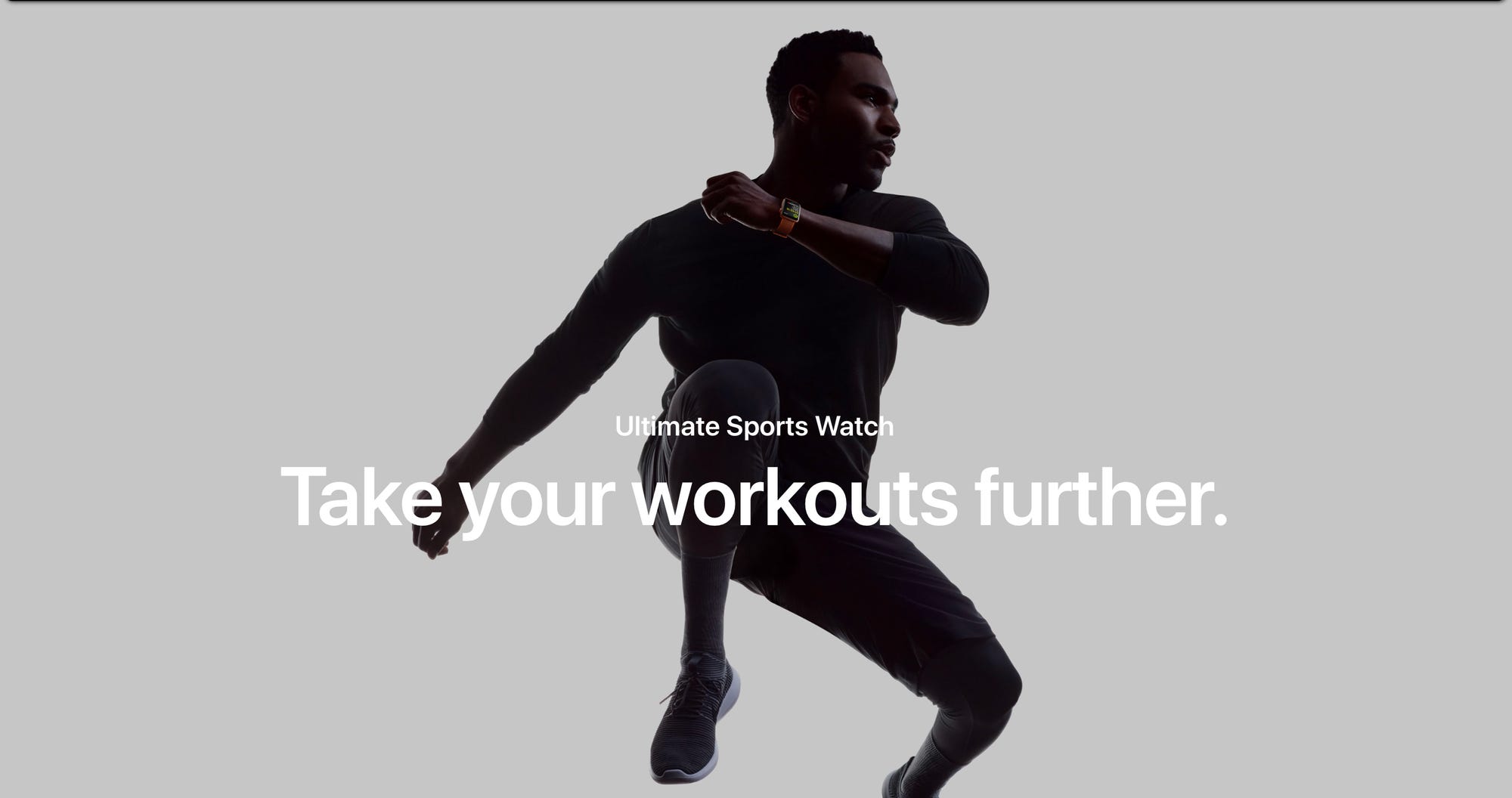
Ultimate Sports Watch: Take your workouts further.
Look at this shift! Not only are fashion references now gone, Apple moves away from showing the Watch up close and starts showing it where it wants you to think of it – in sporting situations.
Image 1 – someone swimming, Image 2 – well, I don’t really know what they’re doing. Jumping?? But the header text says it all – Ultimate Sports Watch: Take your workouts further.
At this point, it more or less feels like the transition is complete. No longer high fashion, the Apple Watch is truly a sports watch now.
But let’s look at the Series 4…
Series 4
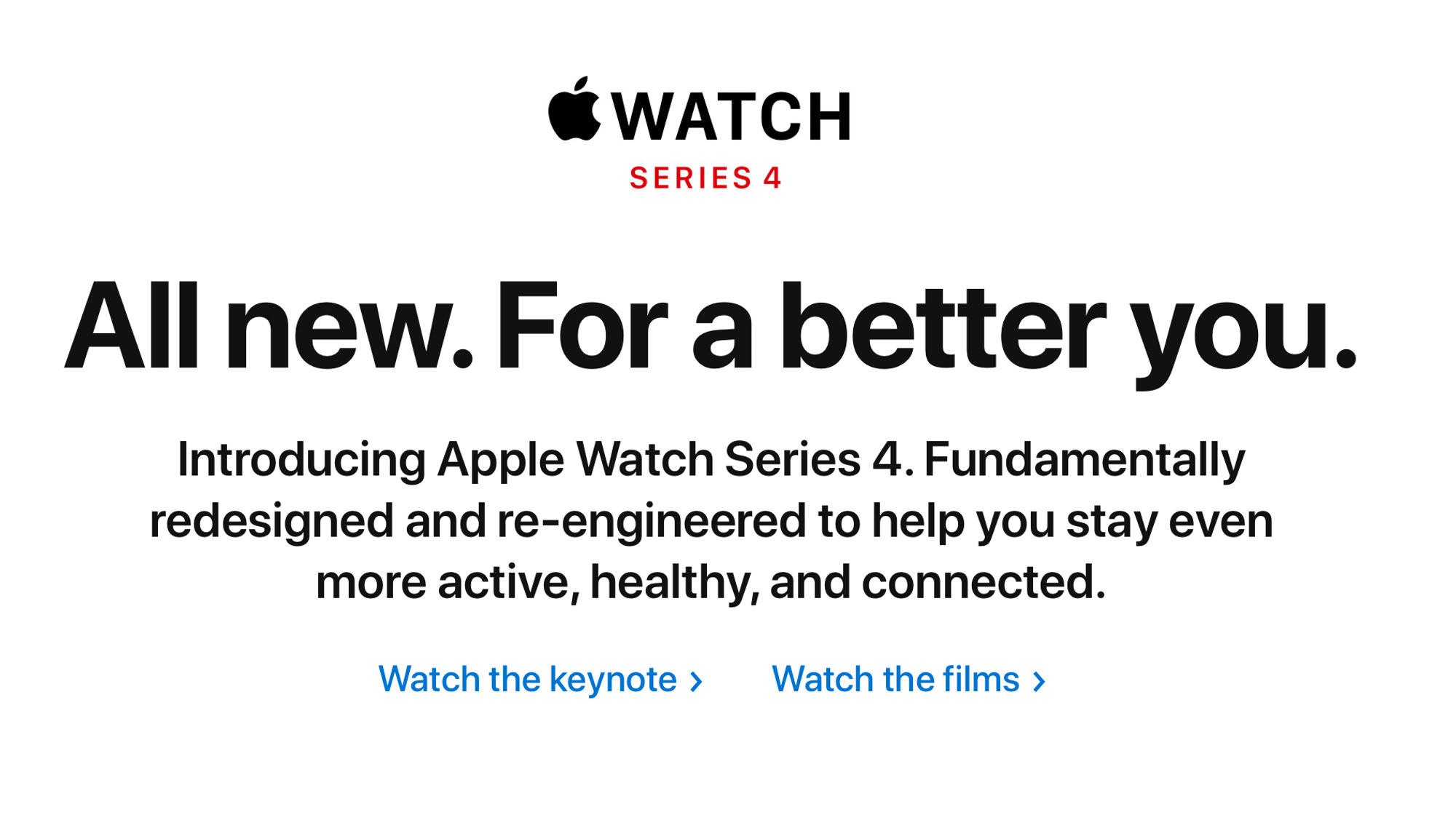
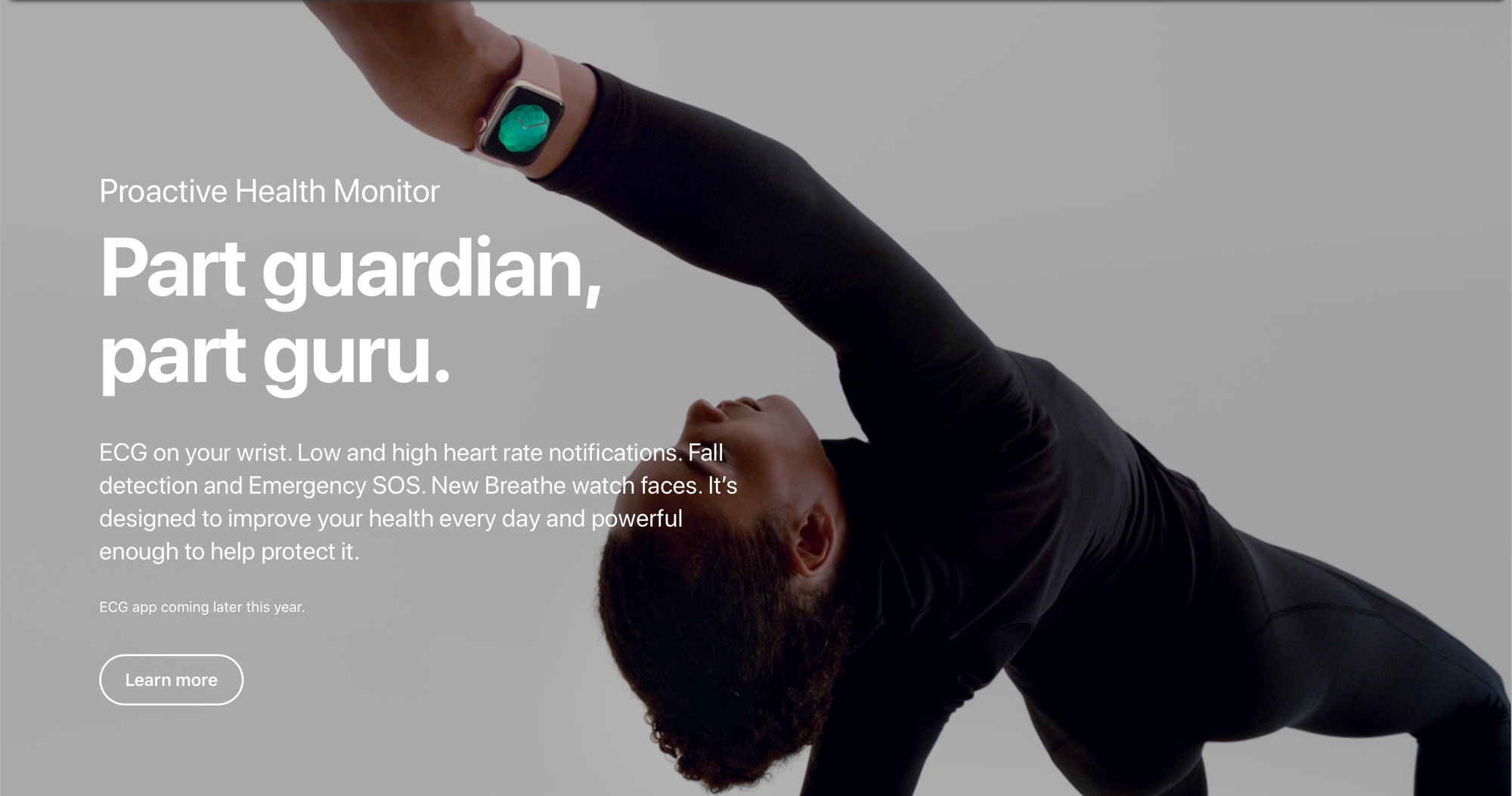
This is where Apple added the Health to Health and Fitness. No longer were their product marketing team just zooming in on things that’d already existed (fitness capabilities like tracking a workout) – they were touting new features added to add to the wellness positioning: ECG, the Breathe app, Emergency SOS.
The Apple Watch’s transition from fashion to fitness, haute couture to health, finished with the Series 4 in 2018.
And as that transition completed, as Apple Watch finally honed in on its product/market fit – Apple Watch growth did too.
See the graph below – Apple’s Wearable/Home/Accessories category more than doubled in that time (big caveat, of course: AirPods are also in this category, and Apple doesn’t break it down by product. I do suspect AirPods contribute fairly significantly here).
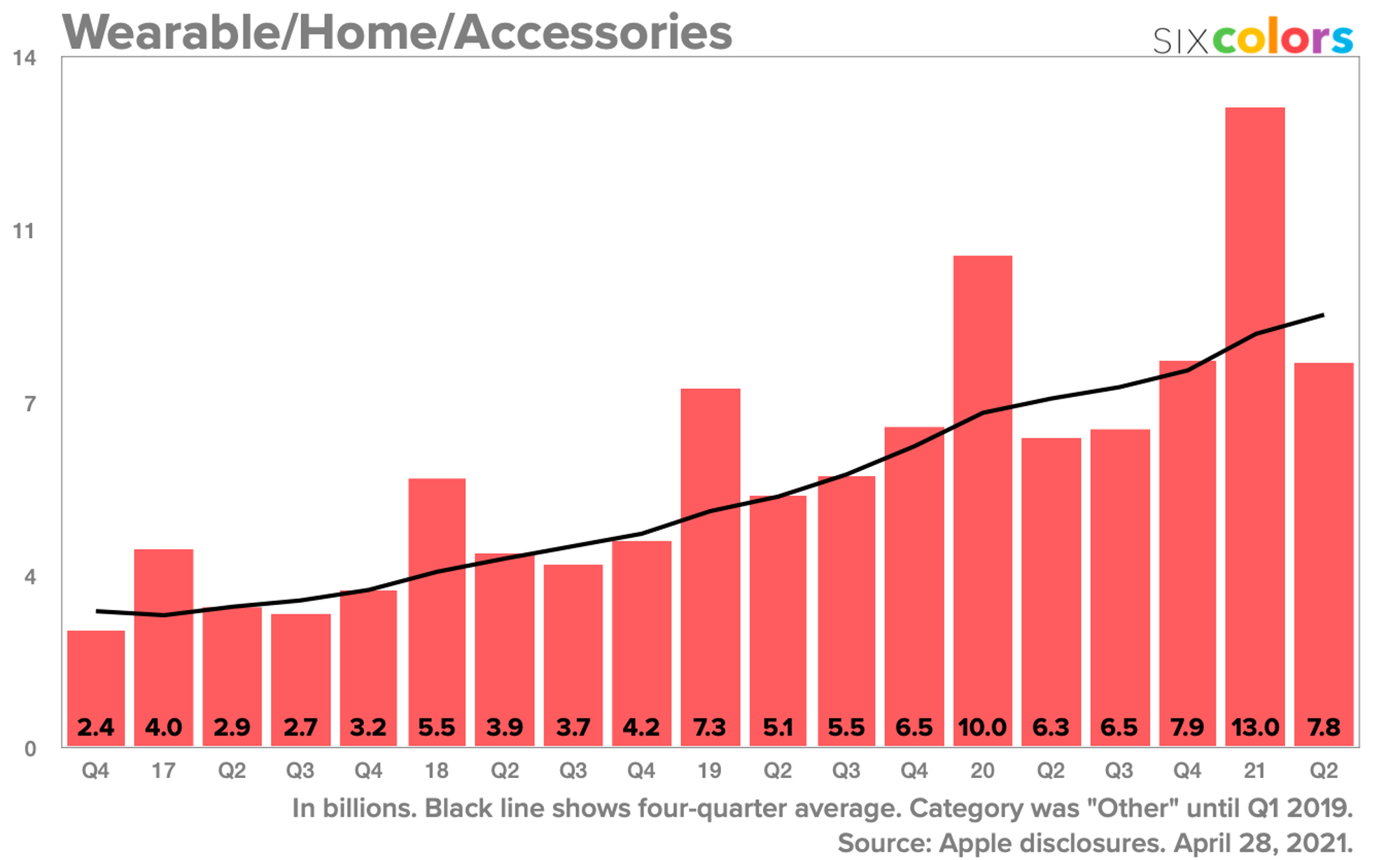
Credit: sixcolors.com
To cut it another way, then: Statista reckons the Apple Watch has a huge 30% of worldwide smartwatch market share – the next closest competitor is Samsung with 10. Apple regularly claims that they sell more watches, full stop, than anyone. And, Forbes thinks they have a whopping 97% customer satisfaction score.
Emotions make us buy. Rationality helps us justify.
The very best products speak to our emotional and rational selves.
And this is where I think Apple nailed it. It shows that they’re first-class product marketers.
They launched Apple Watch as an emotion-drawing product. It was beautiful, they gave it to celebrities, sold it in fashionable shops and marketed it as a lifestyle. They appealed to the emotions of millions (including mine). People wanted it just because it was the Apple Watch.
But once they’d established that, they subtly but surely pivoted to a rational reason to buy. The Apple Watch isn’t about being the most personal device we’ve ever made any more. It’s about a better you. The ultimate device for a healthy life.
Because who doesn’t want to be better? Who doesn’t want to be healthy?
Customers are anchored in the beautiful looking Watch. This, really, is why they buy. But they justify it with the rationality that it’ll help them live a better day.
Products where you can satisfy both the emotional and the rational parts of your brain are special, and it’s Apple’s speciality when you think about it.
iPhones feel lovely in the hand, and the home screen of apps, almost entirely unchanged since 2007, literally invites you to touch the operating system. That is emotionally appealing. But they’re rationally appealing too – originally so you could be contactable or contact someone in an emergency, and now so you can read emails, manage your social life, take photos, search for a restaurant to go to, get directions home.
Time has told
Apple saw that customers were emotionally drawn to the Watch, but needed a clear reason to buy. So they shifted, slowly but surely.
From fashion and timekeeping, to health and fitness.
And it’s been a time-proven success (and, I think, my favourite Apple product?) ever since.
Thanks for reading Speci! Subscribe for free so you don’t miss the next one.





